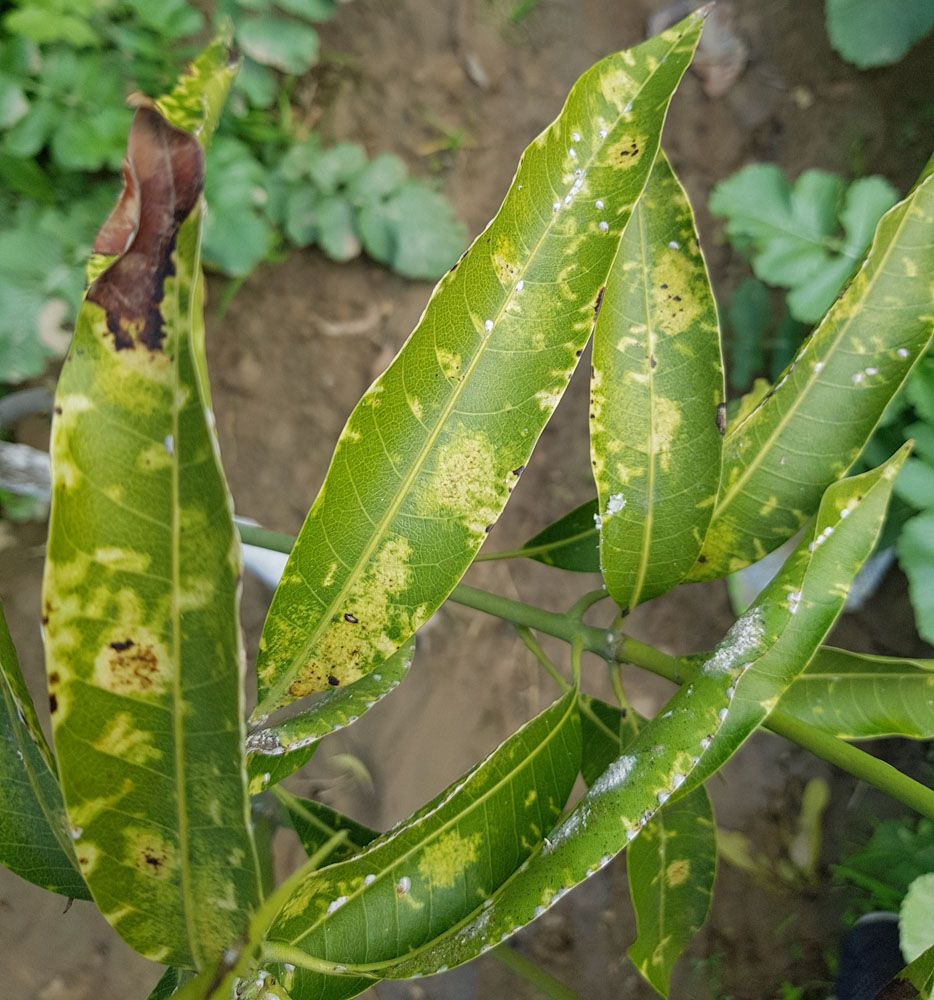
False Oleander Scale – Pseudaulacaspis cockerlli
False Oleander Scale: Appearance, Territory, Damage and Life
Latin name: Pseudaulacaspis cockerelli
Appearances: The female armor is 2 to 3 mm length, shiny white, and pear shape. The terminal exuviae are brownish-yellow in color. Depending on the host, the female scale’s size may change. For instance, it is a little bit smaller on aucuba than palmetto. The male armor is roughly 1 mm long, elongate, snow-white, and feebly tricarinate. The terminal male exuviae have a slight yellowish tint. On the leaves, males typically gather in groups.
Host plants: With over 100 plant species listed as hosts for this species in Florida, the moniker “false oleander scale” is definitely not the best choice. Magonolia grandiflora, sweet bay, Aucuba japonica, Strelitzia species, flowering dogwood, Hedera helix, Taxus species, Nerium oleander, Michelia figo, banana shrub, Elaesgnus species, and Sabal Mexicana are a few of them.
Territory: The Gulf states and perhaps all of California, Florida, Georgia, and Alabama are where they are most commonly found.
Damage insect caused: The scale usually only feeds on leaves; it hardly ever attacks young stems or fruit. On the upper leaf surface, chlorotic patches are a result of its feeding. Typically, these dots are much larger than the scale. The entire leaf becomes yellow and drops prematurely when there is a severe infestation. These scales mostly feed on foliage, where they form yellow, chlorotic regions. Heavy infestations might result in unfrugal plants and early leaf drop. False oleander scale not only attacks oleander but also aucuba, banana shrubs, palms, especially sago palms, and magnolias. The sago palms and magnolias in Mississippi landscapes tend to have the worst infestations. In fact, another name for this scale is magnolia white scale.
Life cycle and habits: Under the armor, females lay tiny, round eggs that are yellow in hue. The insects are known as crawlers once they have hatched. Crawlers leave the armor and remain in a state of awe for several minutes, hours, or even days. The crawlers flatten against the leaf or stem of their host after this time and start to secrete their armor. The insects now at the nymph stage start consuming the plant fluids. The nymphs shed their skin as they mature. Females only shed their skin once, whereas males do it four times. Females develop into brightly colored, oval-shaped adults as they become older and are covered with pear-shaped, white armor. Until they develop into tiny, avian adults, males are shielded by their armor.
